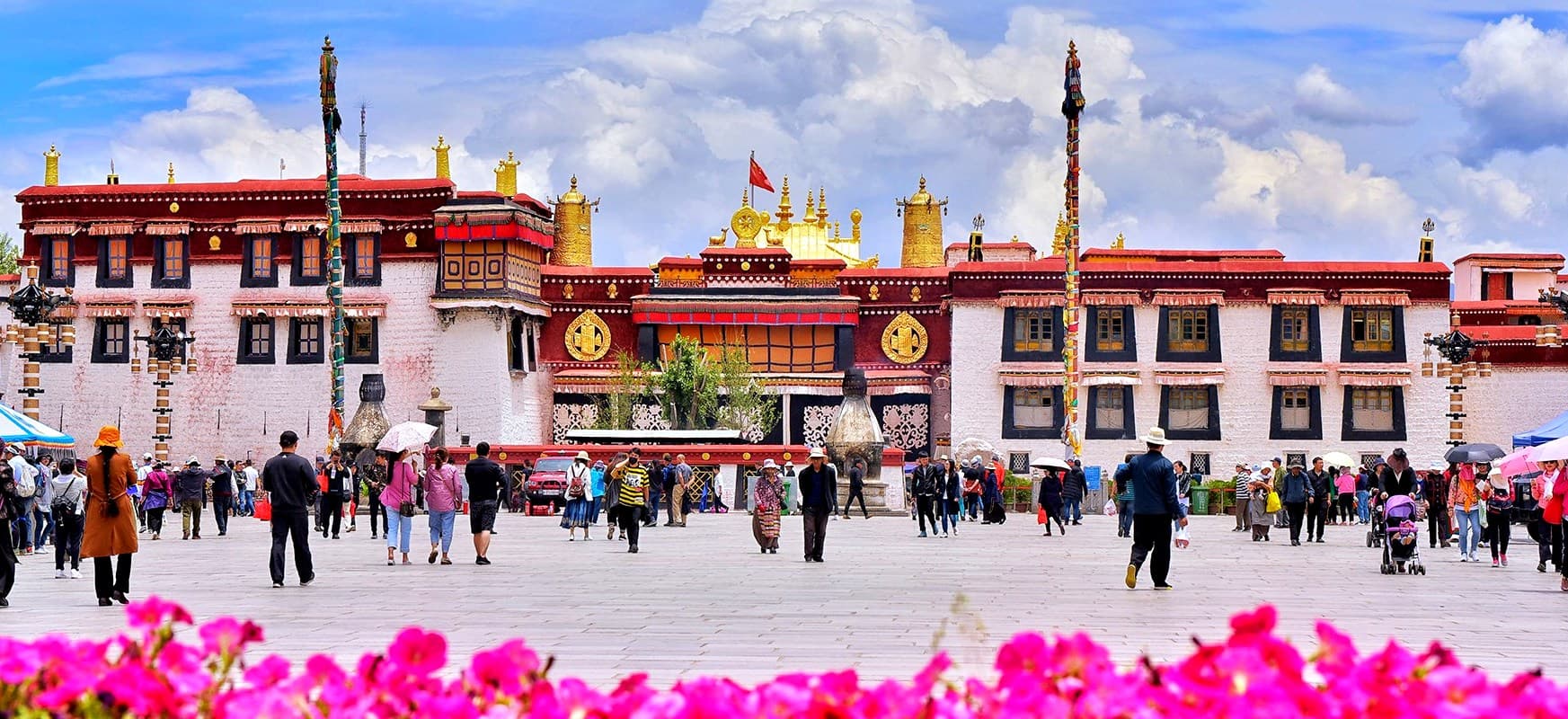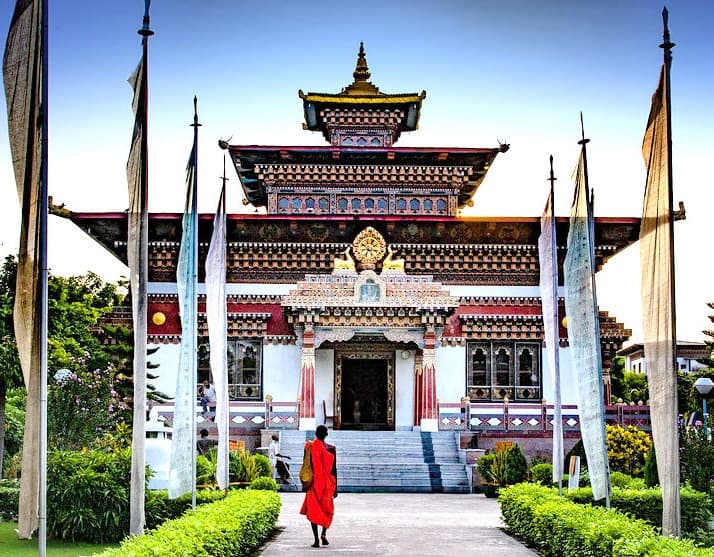Exploring Lhasa, the spiritual heart and capital of Tibet, offers an unparalleled glimpse into a realm where culture and history converge amidst breathtaking Himalayan landscapes. This city, renowned for its sacred sites, including the majestic Potala Palace, the revered Jokhang Temple, and the bustling Barkhor Street, stands as a testament to Tibetan Buddhism's enduring legacy. As a UNESCO World Heritage Site, Lhasa invites travelers to immerse themselves in its rich tapestry of religious traditions, architectural marvels, and vibrant marketplaces, making it a must-visit destination for those seeking a profound cultural experience.
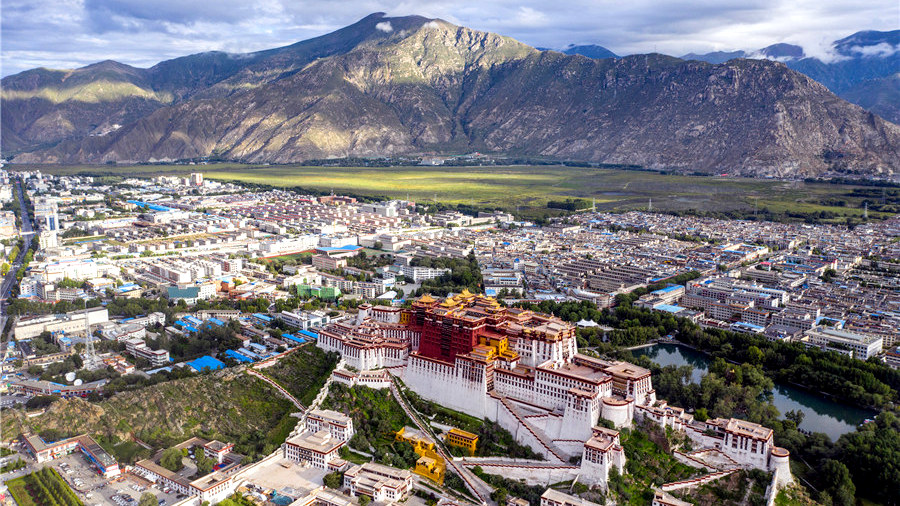
At Druk Holidays, we specialize in creating unforgettable journeys through Lhasa, offering a deep dive into its cultural and historical essence. With our expertly crafted tours, knowledgeable guides, and commitment to providing a seamless experience, we ensure that every traveler discovers the rich Tibetan traditions and heritage that make this city unique. Druk Holidays is your go-to for an enriching exploration of Lhasa, tailored to reveal the soul of Tibet through its compelling history and vibrant culture, all while ensuring comfort and quality service throughout your adventure.
Potala Palace
The Potala Palace in Lhasa is not only a monumental landmark but also a symbol of Tibetan Buddhism and its rich history. This architectural masterpiece, perched on Marpo Ri hill, 130 meters above the Lhasa valley, offers a panoramic view of the city. It serves as a testament to the craftsmanship and religious devotion of the Tibetan people.

Historical Significance: The palace's origins date back to the 7th century when it was first built by King Songtsen Gampo. It was later reconstructed and expanded in the 17th century by the 5th Dalai Lama, becoming the winter residence of successive Dalai Lamas and a central location for Tibetan governance and religious ceremonies.
Architectural Marvel: The Potala Palace is renowned for its striking architecture, a blend of Tibetan and Nepalese design, characterized by its towering white walls, intricate wooden windows, and golden roofs. It stands as a complex of over 1,000 rooms spread across 13 floors, encompassing living quarters, chapels, stupas, and libraries. The palace is divided into two main parts: the White Palace, which served as the administrative section, and the Red Palace, dedicated to religious study and Buddhist prayer.
Cultural Treasure: Within its walls, the palace houses an immense collection of Buddhist artworks, including murals, thangkas, sculptures, and manuscripts. These pieces not only depict religious scenes and figures but also offer insight into Tibetan culture, history, and daily life over centuries. The Potala Palace's libraries are home to thousands of sacred texts, making it a crucial center for Buddhist learning and practice.
UNESCO World Heritage Site: Recognizing its cultural and historical importance, the Potala Palace was inscribed as a UNESCO World Heritage Site in 1994. This designation underscores the need to preserve and protect the palace as a valuable cultural heritage site for future generations.
Visiting the Potala Palace: For travelers, a visit to the Potala Palace is a journey through the heart of Tibetan spirituality and history. It's advisable to book your visit in advance due to entry limitations aimed at preserving the site. Touring the palace, visitors are encouraged to respect the sanctity of the site, dressing modestly and following local customs.
The Potala Palace continues to captivate visitors with its majesty and beauty, offering a window into the soul of Tibet and its enduring traditions.
Jokhang Temple
The Jokhang Temple stands as the spiritual nucleus of Lhasa, embodying the heart and soul of Tibetan Buddhism. This ancient temple, revered as the most sacred temple in Tibet, draws pilgrims from all corners of the Tibetan plateau, who often travel long distances to prostrate in devotion before its sacred image.
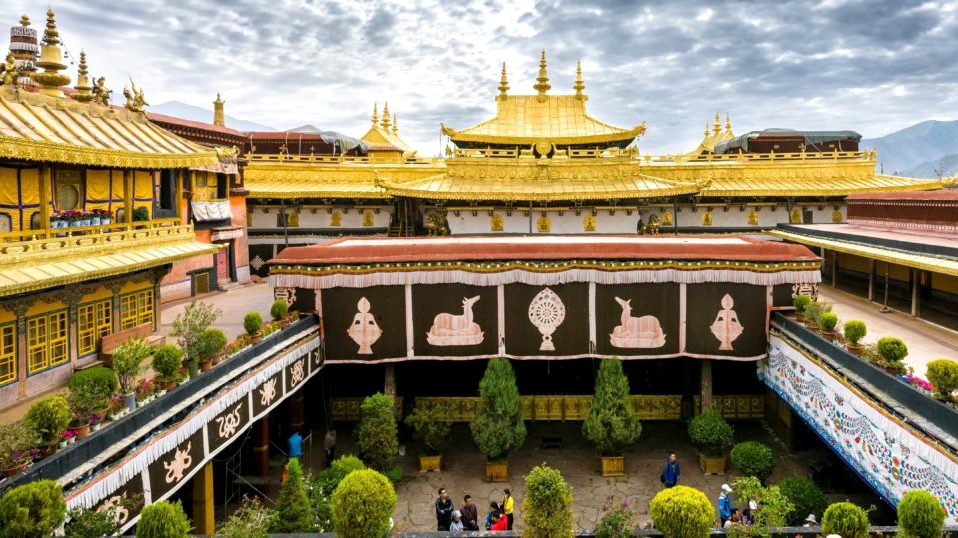
Historical Background: Founded in the 7th century by King Songtsen Gampo to house the statues of Buddha brought to Tibet by his foreign wives, the Jokhang Temple has since become the focal point of spiritual pilgrimage in Tibet. It represents the introduction of Buddhism into Tibet and is a symbol of the union between the Tibetan people and their religion.
Architectural Significance: The architecture of the Jokhang Temple is a striking blend of Indian vihara design, Tibetan, and Nepalese elements, reflecting the cultural exchanges along the ancient Silk Road. Its layout, decorations, and use of space are unique to Tibetan Buddhist temples, featuring a central courtyard, numerous chapels, and an intricate labyrinth of halls and corridors. The temple's roofs, adorned with golden bronze tiles, shine brightly under the sun, symbolizing the divine light of Buddhism.
Spiritual Center: At the heart of the Jokhang Temple is the sacred statue of Jowo Shakyamuni, representing Buddha at the age of twelve. This statue is considered the most venerated and sacred object in Tibet, attracting thousands of worshippers daily. The temple also houses many other important Buddhist statues, thangkas, and relics, making it a significant religious and cultural repository.
Pilgrimage and Practices: The area surrounding the Jokhang Temple, known as the Barkhor, is a sacred circuit followed by pilgrims who perform kora (circumambulation) as a form of meditation and devotion. The streets are lined with stalls selling religious artifacts, traditional Tibetan crafts, and souvenirs, adding to the vibrant atmosphere of the area.
UNESCO World Heritage Site: The Jokhang Temple, along with the Potala Palace and Norbulingka, forms part of the UNESCO World Heritage Site known as the "Historic Ensemble of the Potala Palace, Lhasa." This designation emphasizes the global importance of the temple as a site of cultural and spiritual significance.
Visiting the Jokhang Temple: Visitors to the Jokhang Temple are advised to respect the religious customs and traditions observed within its precincts. Dressing modestly, refraining from loud noises, and following the clockwise direction of pilgrimage are important practices to adhere to. The experience of visiting the Jokhang Temple offers a profound insight into Tibetan spirituality, culture, and community life.
The Jokhang Temple continues to be not just a monument of historical and architectural importance but a living, breathing center of Tibetan Buddhism, embodying the enduring faith and devotion of the Tibetan people.
Barkhor Street
Barkhor Street encapsulates the essence of Tibetan culture, tradition, and daily life, making it a vibrant and essential part of Lhasa. This ancient street surrounds the sacred Jokhang Temple, forming a circuit that has been followed by pilgrims for centuries. The Barkhor is not just a street but a spiritual path, a marketplace, and a gathering place, reflecting the heart and soul of Tibetan life.
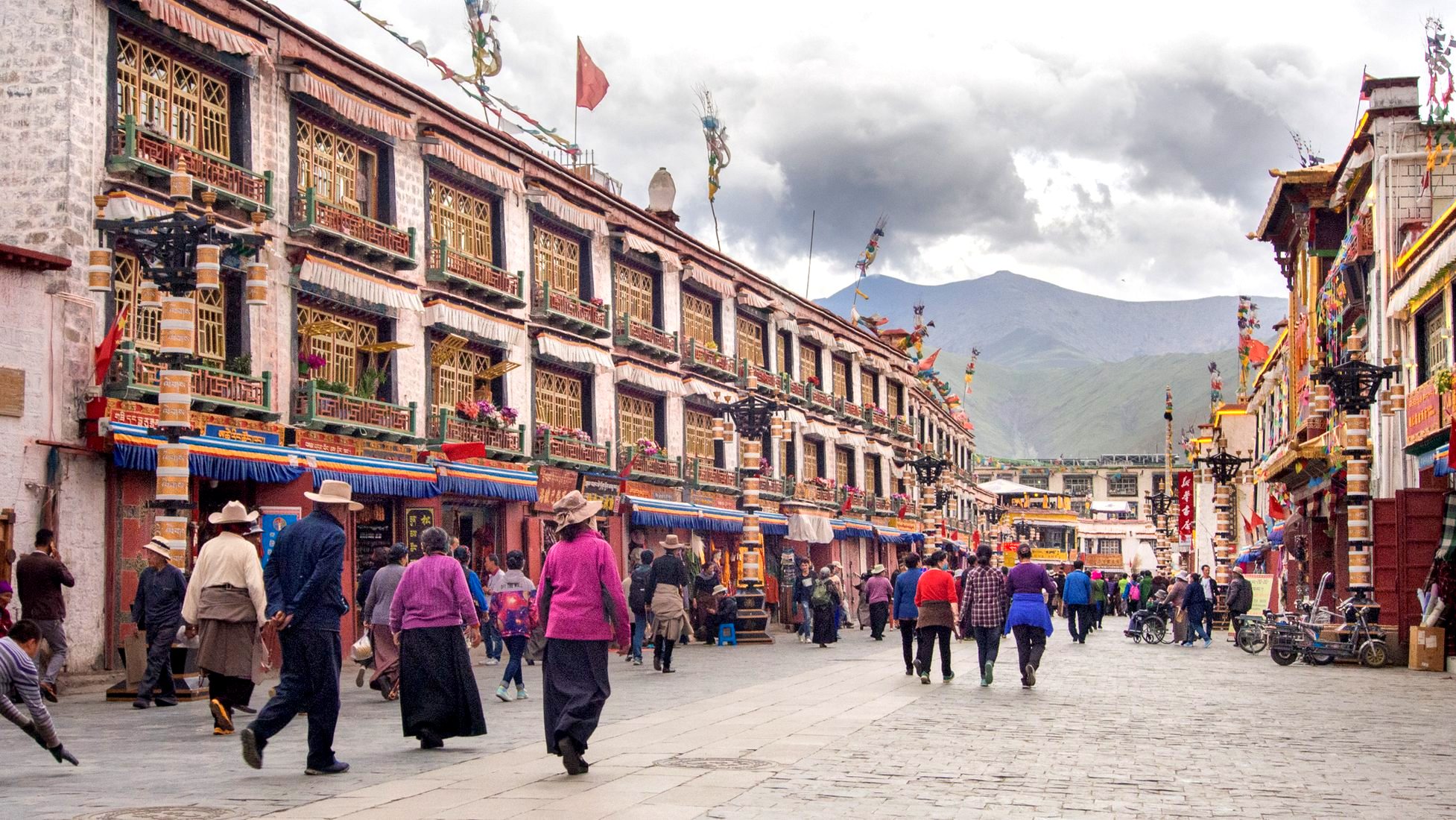
Cultural and Spiritual Significance: Barkhor Street is more than a physical path; it's a spiritual journey. Pilgrims from all over Tibet and beyond come here to perform kora, a form of meditation that involves walking clockwise around the Jokhang Temple. This ritual act of devotion is a profound expression of their Buddhist faith, often performed while spinning prayer wheels, prostrating, and chanting mantras.
A Bustling Marketplace: The Barkhor area is also Lhasa's most lively market, offering an array of Tibetan handicrafts, religious artifacts, jewelry, and traditional clothing. It's a place where the ancient and the modern coexist, allowing visitors to immerse themselves in Tibetan culture. You can find everything from hand-painted thangkas and intricately crafted silver ornaments to yak wool blankets and aromatic incense. Shopping in Barkhor Street is not just a commercial activity; it's an experience that connects you with Tibetan artisans and their centuries-old traditions.
Architectural Charm: The architecture around Barkhor Street is distinctly Tibetan, with traditional houses and buildings that have stood for centuries. These structures, often adorned with colorful prayer flags and intricate wood carvings, contribute to the area's unique atmosphere. The narrow alleys branching off from the main circuit lead to hidden courtyards, small temples, and residential areas, offering glimpses into the daily lives of the local people.
A Social Hub: Barkhor Street serves as a social hub for Lhasans and visitors alike. It's a place where people meet, exchange news, and participate in religious activities. The numerous tea houses and eateries along the street offer traditional Tibetan delicacies like momos (dumplings), thukpa (noodle soup), and butter tea, providing a flavorful taste of local cuisine.
Visitor Etiquette: While exploring Barkhor Street, visitors need to respect local customs and traditions. Dress modestly, give way to pilgrims, and follow the clockwise direction when walking around the Jokhang Temple. Photography should be approached with sensitivity, especially when taking pictures of people or religious ceremonies.
Barkhor Street is more than just a destination; it's a living museum of Tibetan culture and spirituality. A visit here offers an unparalleled opportunity to connect with the essence of Tibet, making it a must-experience for anyone exploring Lhasa.
Sera Monastery
Sera Monastery, located on the outskirts of Lhasa, is one of the great three university monasteries of Tibet, along with Ganden and Drepung. Founded in 1419 by Jamchen Chojey of the Sakya lineage of Tibetan Buddhism, Sera Monastery has since become a cornerstone of Buddhist learning and practice, renowned for its distinctive debates on Buddhist philosophy.

Educational and Religious Significance: Sera Monastery plays a crucial role in the education of monks, specializing in the study of logic, Buddhist philosophy, and various other religious texts. The monastery is divided into several colleges, each focusing on different aspects of Buddhist teachings and practice. This rigorous academic environment prepares monks for a life of meditation, teaching, and scholarship.
Debating Tradition: One of the most captivating aspects of Sera Monastery is its tradition of monastic debating. Every afternoon, the monastery's courtyards come alive with the sounds of monks engaging in vigorous debates on philosophical questions. This practice is a vital part of their education, helping monks to sharpen their understanding and intellectual skills. Observing these debates is a unique experience for visitors, offering insight into the dynamic method of learning and interpretation of Buddhist teachings.
Architectural Features: The monastery's architecture is a splendid example of Tibetan design, featuring white-washed walls, golden roofs, and elaborate window frames. It houses several chapels, assembly halls, and a vast library containing thousands of scriptures and texts. The intricate murals and statues found within the monastery depict various aspects of Buddhist lore and are of significant artistic and religious value.
Community and Ceremonies: Sera Monastery is not just an educational institution; it's also a living community of monks who follow daily routines of prayer, meditation, and communal activities. The monastery hosts numerous religious festivals and ceremonies throughout the year, which attract both locals and tourists. These events offer a deeper understanding of Tibetan Buddhist culture and the monastic lifestyle.
Visiting Sera Monastery: Visitors to Sera Monastery are advised to respect the sanctity of the site by dressing modestly, speaking softly, and following the monastery's rules and regulations. Photography is usually permitted, but it's courteous to ask for permission, especially during religious ceremonies or when taking close-up photos of monks.
The experience of visiting Sera Monastery is both educational and spiritual, providing a window into the rich traditions of Tibetan Buddhism and the monastic life. Whether you're drawn by the intellectual rigor of the debates, the spiritual atmosphere, or the artistic heritage, Sera Monastery offers a profound glimpse into the heart of Tibetan culture and religious practice.
Norbulingka
Norbulingka, meaning "The Jewel Park" in Tibetan, is a masterpiece of Tibetan art and architecture, renowned for its beautiful gardens and palaces. Located in Lhasa, just west of the Potala Palace, Norbulingka serves as the traditional summer residence of the Dalai Lamas. Established in the 18th century under the reign of the 7th Dalai Lama, it has been a crucial center for Tibetan religion, culture, and politics.
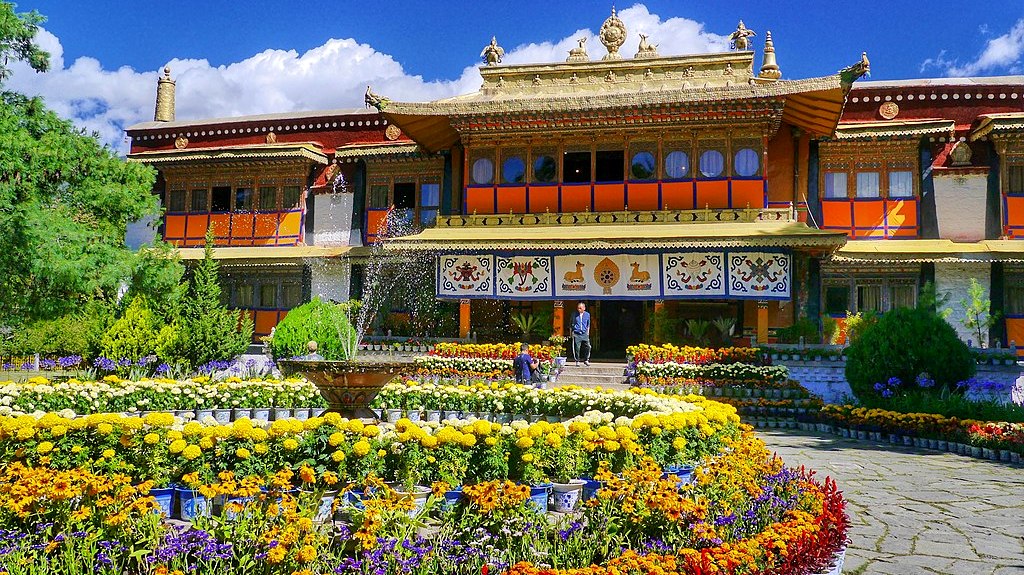
Historical and Cultural Significance: Norbulingka is a symbol of the intricate relationship between Tibetan spirituality and governance. It has been the setting for numerous important religious and state ceremonies, reflecting its central role in the social and political life of Tibet. The site embodies the sophistication of Tibetan landscape gardening, which harmonizes buildings, water, and greenery into a serene and sacred environment.
Architectural Marvel: The estate encompasses several palace complexes, each added by successive Dalai Lamas, showcasing a blend of Tibetan and European architectural styles. These palaces are adorned with murals, thangkas, and sculptures that depict various aspects of Tibetan Buddhist mythology, history, and culture. The architecture of Norbulingka stands as a testament to the artistic achievements of Tibetan craftsmen and their ability to integrate natural landscapes with built environments.
The Gardens of Norbulingka: Norbulingka's gardens are a significant feature, covering over 360,000 square meters, making it the largest man-made garden in Tibet. These meticulously maintained gardens are filled with a variety of trees, flowers, and ponds, offering a tranquil escape from the hustle and bustle of Lhasa. The gardens also serve as a public park, where locals and tourists alike can enjoy picnics, leisurely walks, and the beauty of traditional Tibetan landscaping.
Preservation and UNESCO World Heritage Site: Recognizing its cultural and historical importance, Norbulingka was inscribed as a UNESCO World Heritage Site in 2001, as part of the "Historic Ensemble of the Potala Palace." This designation underscores the need to preserve and protect Norbulingka as a valuable cultural heritage site for future generations.
Festivals and Events: Norbulingka is also the focal point for various Tibetan festivals, most notably the Shoton Festival, which marks the beginning of the yogurt season. During this festival, the park comes alive with traditional opera performances, picnics, and a display of giant thangkas at the Drepung Monastery. These celebrations are a vibrant expression of Tibetan culture and an opportunity for visitors to experience the rich traditions of Tibet.
Visiting Norbulingka: Visitors to Norbulingka are encouraged to respect the cultural and spiritual significance of the site. Exploring the palaces, admiring the artistry of the murals and sculptures, and relaxing in the gardens provide a comprehensive insight into the splendor of Tibetan royal life and the natural beauty of the region.
Norbulingka remains a precious jewel in the crown of Tibetan cultural heritage, offering a unique blend of natural beauty, artistic genius, and spiritual tranquility.
Tibetan Cuisine and Crafts
Tibetan cuisine and crafts offer a fascinating glimpse into the rich cultural heritage and daily life of the Tibetan people. Both are integral to understanding the region's traditions, spirituality, and way of life.
Tibetan Cuisine
Tibetan cuisine is hearty and designed to sustain those living in the high altitudes of the Himalayas. Here are some staples and delicacies:
- Tsampa: The cornerstone of Tibetan cuisine, Tsampa is roasted barley flour mixed with Tibetan butter tea, water, or beer, creating a doughy paste that is both filling and nutritious.
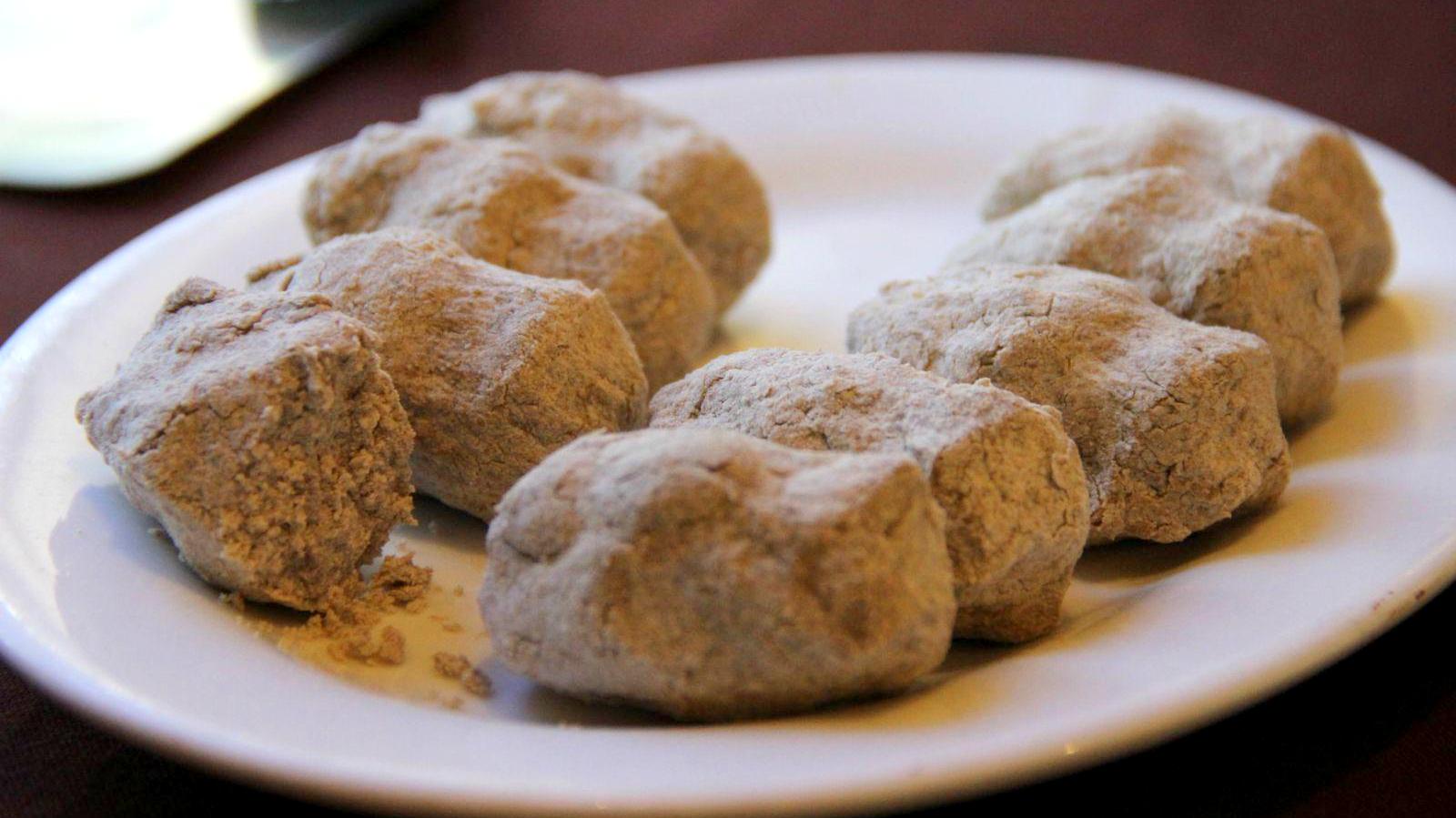
- Butter Tea: A traditional drink made from tea leaves, yak butter, and salt, butter tea is an acquired taste for many but is essential in the Tibetan diet for its energy and warmth.
- Momos: Tibetan dumplings filled with meat (usually yak or beef) or vegetables, steamed or fried, and served with a spicy dipping sauce.
- Thukpa: A noodle soup that combines vegetables, meat, and noodles in a hearty broth, perfect for the cold Tibetan climate.
- Yak Meat: Used in various dishes, yak meat is a protein staple in the Tibetan diet, known for its lean and flavorful qualities.
These dishes reflect the adaptation of Tibetan people to their environment, using locally available ingredients to create nourishing and warming meals.
Tibetan Crafts
Tibetan crafts are deeply influenced by Tibetan Buddhism and include a variety of textiles, jewelry, and art forms that are both functional and symbolic.
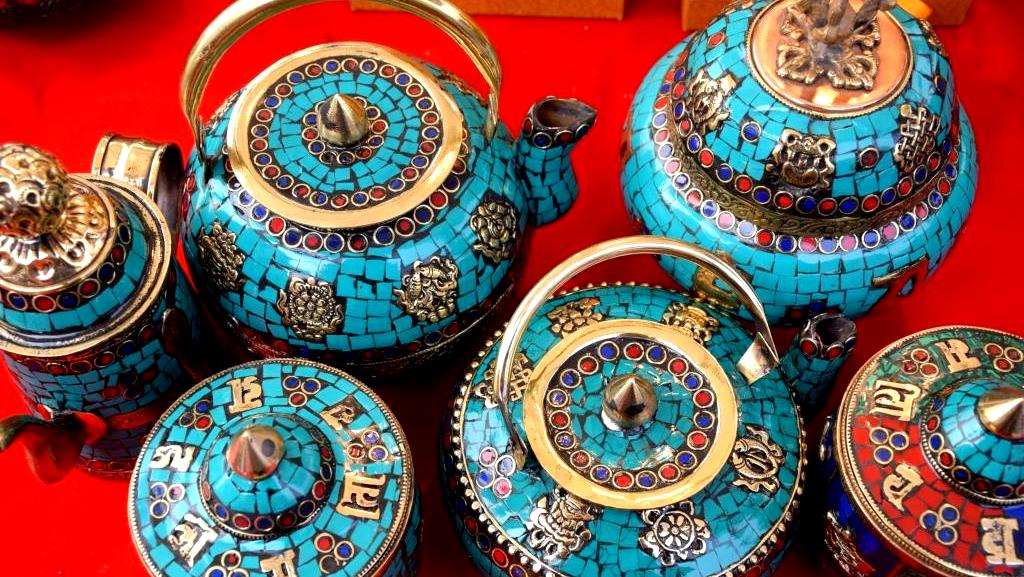
- Thangkas: These are intricate paintings on cotton or silk appliqué that portray Buddhist deities, scenes, or mandalas. Thangkas serve as important teaching tools and aids in meditation.
- Prayer Flags: Colorful rectangular cloths, often found strung along mountain ridges and peaks in the Himalayas, are used to bless the surrounding countryside. The flags carry prayers and mantras to the wind.
- Tibetan Jewelry: Crafted from silver, gold, and precious stones, Tibetan jewelry often incorporates symbols and materials with spiritual significance, such as turquoise and coral.
- Tibetan Rugs: Handwoven from wool, these rugs are known for their durability and vibrant patterns, often featuring traditional Tibetan motifs.
- Musical Instruments: Traditional instruments like the dungchen (long trumpet), drilbu (handbell), and damaru (hand drum) are used in Buddhist rituals and ceremonies.
These crafts are not only expressions of artistic skill but also hold deep spiritual significance, serving as a means of preserving and passing down Tibetan Buddhism and cultural identity.
Preserving Tradition
Both Tibetan cuisine and crafts play a crucial role in the cultural preservation and education of Tibetans and the wider world. They offer insights into the resilience, spirituality, and beauty of Tibetan life amidst the challenges of modernity and geopolitical tensions. For travelers and enthusiasts, engaging with Tibetan food and crafts is a way to support the local economy and contribute to the preservation of Tibet's unique cultural heritage.
Cultural Preservation and Education
The preservation of Tibetan culture and the education of both Tibetans and the global community about its rich traditions are crucial for maintaining the identity, history, and spiritual heritage of Tibet. Amidst challenges such as modernization, globalization, and political issues, efforts to keep Tibetan culture alive have become increasingly important. These initiatives include the preservation of language, religious practices, art, music, and traditional crafts, as well as the promotion of Tibetan history and philosophy.
Cultural Preservation
- Language and Literature: The Tibetan language is not just a means of communication but also a carrier of the culture's rich literary and religious texts. Organizations and educational institutions work to preserve and promote the Tibetan language through classes, workshops, and digital platforms. This includes the digitization of ancient texts and the promotion of Tibetan literature.
- Religious Practices: Tibetan Buddhism is central to the cultural and spiritual life of the Tibetan people. Monasteries and nunneries play a key role in the preservation of religious texts, rituals, and practices. Efforts are made to support these religious institutions, facilitate the education of monks and nuns, and organize events that promote Buddhist teachings and meditation practices globally.
- Art and Music: Traditional Tibetan art forms, including thangka painting, statue making, and music, are vital expressions of the culture's spiritual beliefs and historical narratives. Workshops, exhibitions, and performances are organized both within and outside Tibet to keep these traditions alive. Additionally, there are initiatives to teach these art forms to younger generations, ensuring their continuation.
- Traditional Crafts: The preservation of traditional Tibetan crafts such as weaving, jewelry making, and pottery is essential for maintaining the culture's unique aesthetic and craftsmanship. Programs aimed at revitalizing these crafts include training artisans, creating markets for their products, and documenting their techniques.
Education
- Institutions and Programs: Several institutions and programs focus on educating both Tibetans and the international community about Tibetan culture. This includes schools offering courses in Tibetan history, language, and philosophy, as well as cultural exchange programs that allow for a deeper understanding of Tibetan life.
- Digital Platforms and Resources: The use of digital platforms has become a significant tool in the education and preservation of Tibetan culture. Websites, online courses, and social media channels offer resources on Tibetan Buddhism, language, and arts, making them accessible to a wider audience.
- Cultural Festivals and Events: Festivals and events that celebrate Tibetan culture provide opportunities for education and engagement. These events often include exhibitions, workshops, lectures, and performances, showcasing the diversity and richness of Tibetan traditions.
Challenges and Opportunities
The preservation and education of Tibetan culture face challenges, including limited resources, political issues, and the risk of cultural assimilation. However, these efforts are vital for keeping the Tibetan identity alive and fostering a sense of community and continuity among Tibetans worldwide. Additionally, the global interest in Tibetan Buddhism and culture presents opportunities for cross-cultural exchange and understanding, contributing to the broader goals of peace and spiritual development.
The preservation of Tibetan culture and education about its traditions are fundamental to the survival of Tibet's unique heritage. Through concerted efforts across various sectors, the beauty, depth, and wisdom of Tibetan culture continue to thrive, offering invaluable insights and lessons for the global community.
Best Time to Explore Lhasa
Exploring Lhasa, the heart of Tibet, presents travelers with an unparalleled experience of rich cultural heritage, breathtaking landscapes, and profound spiritual ambiance. To fully appreciate all that Lhasa has to offer, timing your visit is crucial. The best time to explore Lhasa largely depends on the weather, tourist seasons, and specific festivals or events you may wish to experience.

Spring (April to June)
- Weather: Spring brings warming temperatures and melting snow, making it one of the most beautiful times to visit Lhasa. The weather is generally mild, with daytime temperatures comfortable for sightseeing.
- Tourism: This season sees a moderate level of tourism, avoiding the peak crowds of summer. It's an excellent time for those who prefer a quieter visit.
- Festivals: While spring is quieter in terms of festivals, the blooming landscapes and vibrant city life provide a fresh and lively atmosphere.
- Travel Tips: The clear skies and moderate weather make spring ideal for outdoor activities and exploring Lhasa's historical sites without the discomfort of extreme cold or heat.
Summer (July to August)
- Weather: Summer is warm and also marks the rainy season in Lhasa. Afternoon showers are common but usually brief, and mornings are typically sunny and clear.
- Tourism: This is the peak season for tourism due to the favorable weather and long daylight hours, making it a busy time in Lhasa.
- Festivals: The Shoton Festival, one of Tibet's most significant festivals, occurs in late August, featuring opera performances and giant thangka unveilings.
- Travel Tips: Despite the rain, summer's warmth and the vibrancy of the festival season make it a popular time to visit. Prepare for variable weather and potentially crowded sites.
Autumn (September to October)
- Weather: Autumn offers some of the best weather for visiting Lhasa, with clear skies, mild temperatures, and minimal rainfall. The visibility is excellent, making it ideal for photography.
- Tourism: Tourist numbers start to decrease, offering a more relaxed atmosphere while still enjoying the pleasant weather.
- Festivals: Although major Tibetan festivals are less common in autumn, the natural beauty of the season provides a compelling backdrop for exploration.
- Travel Tips: With comfortable temperatures and fewer tourists, autumn is perfect for those looking to explore Lhasa's cultural and historical sites in peace.
Winter (November to March)
- Weather: Winters are cold, but Lhasa's location in a valley means it experiences less snow than other parts of Tibet. Daytime temperatures can be brisk but sunny.
- Tourism: Winter sees the fewest tourists, making it ideal for visitors seeking solitude and reduced prices for accommodations and tours.
- Festivals: The Tibetan New Year (Losar) falls in this period, offering a unique insight into local traditions and celebrations.
- Travel Tips: While winter requires warm clothing, it also offers the chance to experience Lhasa without the crowds. The monasteries and temples continue their daily rituals, providing a more intimate glimpse into Tibetan spirituality.
Each season in Lhasa presents its own set of attractions and challenges. Whether you're drawn by the promise of vibrant festivals, serene landscapes, or simply the allure of fewer tourists, planning your visit according to the season can greatly enhance your experience of this historic and spiritual city.
Things to Consider while traveling in Lhasa
Traveling to Lhasa, a city steeped in spiritual and cultural history, offers an enriching experience unlike any other. However, due to its unique geographical location, political situation, and cultural significance, there are several important considerations to keep in mind to ensure a respectful, safe, and enjoyable trip. Here are key things to consider while traveling in Lhasa:
Travel Permits
- Tibet Travel Permit: All foreign visitors require a Tibet Travel Permit to enter Tibet. This permit must be arranged in advance through a travel agency, as individuals cannot apply for it directly.
- Additional Permits: Depending on your itinerary, you may need additional permits to visit certain areas outside Lhasa. Your travel agency can help arrange these.
Altitude Sickness
- Acclimatization: Lhasa sits at an altitude of about 3,650 meters (11,975 feet), which can lead to altitude sickness. Allow time for acclimatization upon arrival and consider staying in Lhasa for a few days before venturing to higher elevations.
- Precautions: Stay hydrated, avoid strenuous exercise initially, and consider medication or remedies that help with altitude adjustment.
Cultural Sensitivity
- Respect Local Customs: Tibetan culture is rich and deeply spiritual. Show respect for local customs, dress modestly, and act politely. When visiting religious sites, follow the local etiquette, such as walking around temples in a clockwise direction.
- Photography: Always ask for permission before taking photos of people or inside monasteries. Some areas may charge a fee for photography.
Political Awareness
- Sensitive Topics: Political discussions related to Tibet and China can be sensitive. It's wise to avoid engaging in political conversations with locals or making public comments on such matters.
- Restricted Areas: Be aware of any restrictions on travel and avoid photographing military installations or personnel.
Health and Safety
- Medical Facilities: Medical facilities in Lhasa are improving but may not meet Western standards, especially for serious conditions. Consider travel health insurance that includes evacuation coverage.
- Food and Water Safety: Stick to bottled or purified water and ensure food is thoroughly cooked to avoid gastrointestinal issues.
Weather and Clothing
- Layered Clothing: Weather in Lhasa can change rapidly, so wear layered clothing to adjust to varying temperatures, especially when traveling from low to high altitudes.
- Sun Protection: The UV radiation is strong at high altitudes. Wear sunscreen, sunglasses, and a hat to protect yourself from sunburn.
Language Barrier
- Communication: While Mandarin Chinese is widely spoken, and English is common in tourist areas, learning a few basic phrases in Tibetan can be appreciated and helpful in more remote areas.
Cash and Expenses
- Cash is King: Credit card acceptance is limited outside major hotels and tourist shops. Carry enough cash for your needs, and note that ATMs may not be as reliable or available.
Itinerary Planning
- Flexible Schedule: Travel in Tibet can be unpredictable due to weather conditions, permit requirements, and other factors. Keep your schedule flexible to accommodate changes.
By keeping these considerations in mind, travelers can navigate the complexities of visiting Lhasa, ensuring a journey that is respectful, safe, and deeply rewarding.
Accommodation and Food during the Lhasa Tour
Accommodation in Lhasa
Lhasa offers a wide range of accommodation options to suit every budget and preference, from luxurious hotels to affordable guesthouses. Here are some tips and things to consider when selecting your accommodation:
Luxury Hotels
- Features: High-end hotels in Lhasa provide luxurious amenities, including spa services, fine dining restaurants, and cultural performances. They often feature traditional Tibetan architecture and decor.
- Examples: St. Regis Lhasa Resort, Shangri-La Hotel, and InterContinental Lhasa Paradise.
- Considerations: These hotels offer comfort and convenience but at a higher price. They often have staff who speak fluent English and can assist with arranging tours and permits.
Mid-Range Hotels
- Features: These hotels offer a balance between comfort and cost, with amenities such as private bathrooms, on-site dining, and Wi-Fi.
- Considerations: Mid-range hotels can provide a more authentic Tibetan experience, often with local decorations and hospitality.
Budget Guesthouses and Hostels
- Features: Budget accommodations are perfect for travelers looking to save money. They offer basic amenities and shared facilities.
- Considerations: While less expensive, these options may not have English-speaking staff. They offer an excellent opportunity to meet other travelers and experience local life.
Tibetan Homestays
- Features: Staying in a Tibetan homestay allows you to experience local culture firsthand, with home-cooked meals and the warmth of Tibetan hospitality.
- Considerations: Facilities may be basic, and language barriers can exist, but the cultural exchange is invaluable.
Food in Lhasa
Tibetan cuisine is unique and influenced by its high altitude and Buddhist culture. Here are some must-try dishes and food-related tips for your Lhasa tour:
Tibetan Dishes
- Tsampa: Barley flour mixed with Tibetan butter tea is a staple food.
- Momos: Tibetan dumplings filled with meat or vegetables.
- Thukpa: A hearty noodle soup with meat or vegetables, perfect for cold days.
International Cuisine: Lhasa has a growing number of restaurants offering Chinese, Nepalese, Indian, and Western cuisine, catering to diverse palates.
Vegetarian and Vegan Options: While traditional Tibetan cuisine relies heavily on meat and dairy, many restaurants in Lhasa cater to vegetarian and vegan diets, especially near monasteries and in tourist areas.
Tea Houses: Don't miss experiencing a traditional Tibetan tea house, where you can enjoy butter tea (a salty tea made with yak butter) or sweet milk tea along with local snacks.
Drinking Water: Stick to bottled or boiled water. Many hotels and guesthouses provide boiled water or water purification options for guests.
Tips for Dining in Lhasa
- Try Local Delicacies: Embrace the opportunity to try local Tibetan dishes for an authentic experience.
- Altitude Considerations: High altitude may affect your digestion. Eat light meals initially and gradually adapt to local foods.
- Hygiene: Choose eateries that are busy and appear clean to avoid foodborne illnesses.
Whether you're indulging in the luxury of a high-end hotel or embracing the authenticity of a homestay, Lhasa's accommodation and food scenes offer something for every traveler, providing a window into the rich Tibetan culture and way of life.
Exploring Lhasa is an unforgettable journey into the heart of Tibetan culture, spirituality, and breathtaking landscapes. From the awe-inspiring Potala Palace to the serene beauty of Norbulingka, the city offers a unique blend of historical grandeur and vibrant daily life. Whether savoring the rich flavors of Tibetan cuisine, wandering through bustling Barkhor Street, or finding peace within the ancient walls of Jokhang Temple and Sera Monastery, Lhasa captivates the soul. Accommodations ranging from luxurious hotels to cozy homestays ensure a comfortable stay, while the diverse food scene caters to all tastes and preferences. With careful consideration for travel permits, cultural sensitivity, and the high-altitude climate, visitors can fully embrace the enchanting experience of Lhasa. This journey not only promises an exploration of Tibetan culture and history but also an opportunity for personal reflection and growth amidst the majestic Himalayas.
FAQs of Exploring Lhasa: A Cultural and Historical Guide
Q. Do I need a special permit to visit Lhasa?
A. Yes, all foreign visitors require a Tibet Travel Permit to enter Lhasa and other parts of Tibet. This permit can only be obtained through a registered travel agency. Depending on your itinerary, you may also need additional permits for certain areas.
Q. How can I prevent altitude sickness in Lhasa?
A. To minimize the risk of altitude sickness, it's recommended to acclimatize for a few days upon arrival in Lhasa, which is situated at an altitude of about 3,650 meters (11,975 feet). Stay hydrated, avoid strenuous activity initially, and consider medication if you're prone to altitude sickness.
Q. What are the must-visit sites in Lhasa?
A. The must-visit sites include the Potala Palace, Jokhang Temple, Barkhor Street, Sera Monastery, and Norbulingka. Each site offers a unique insight into Tibetan culture, history, and religion.
Q. What is the best time to visit Lhasa?
A. The best time to visit Lhasa is from May to October when the weather is mild and the days are sunny. This period also features several Tibetan festivals, offering a deeper cultural experience.
Q. Can I discuss politics with locals?
A. It's advisable to avoid political discussions related to Tibet's status and relations with China. These topics can be sensitive, and discretion should be used to respect local sentiments.
Q. What should I wear when visiting temples and monasteries?
A. Dress modestly when visiting religious sites. Cover your shoulders and avoid wearing shorts or skirts above the knee. Hats should be removed before entering temples and monasteries.
Q. Is vegetarian food available in Lhasa?
A. Yes, vegetarian and even vegan options are increasingly available in Lhasa, especially in restaurants catering to tourists. Traditional Tibetan cuisine also offers vegetarian dishes like momos (dumplings) and thukpa (noodle soup).
Q. How should I handle money transactions in Lhasa?
A. Cash is widely accepted, and having local currency (Chinese Yuan) is essential for small purchases. Credit cards are accepted in larger hotels and some shops, but ATMs can be less reliable, so it's best to carry sufficient cash.
Q. Are there any health care facilities for tourists?
A. Lhasa has hospitals and clinics, but facilities may not meet Western standards, especially for serious conditions. Travelers are advised to carry their essential medications and consider health insurance that covers medical evacuation.
Q. What etiquette should I follow when taking photos?
A. Always ask for permission before taking photos of people or religious objects. In some monasteries and museums, photography may be prohibited or require a fee.

